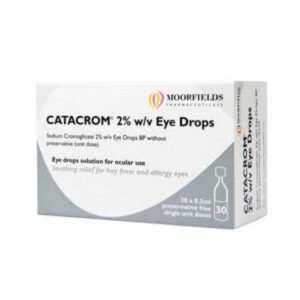Bacterial or Allergic Conjunctivitis: What You Should Know
The eyes are not just the windows to the soul; they are also sensitive organs prone to various infections and allergies. Conjunctivitis, commonly known as pink eye, is one such condition that affects millions of people worldwide. When it comes to conjunctivitis, two common types are bacterial and allergic conjunctivitis. While both share similar symptoms, they differ in their causes and treatments. In this article, we will delve into the details of bacterial and allergic conjunctivitis to help you better understand these eye conditions and how to manage them effectively.
What is Bacterial conjunctivitis?
Bacterial conjunctivitis is an infection caused by bacteria, such as Staphylococcus aureus or Streptococcus pneumoniae. It can be highly contagious and often spreads through direct contact with infected individuals or contaminated objects. The hallmark symptoms of bacterial conjunctivitis include redness in the white part of the eye, excessive tearing, discharge that is typically yellow or green, and a gritty sensation. In some cases, the eyelids may stick together after sleep due to the discharge. Bacterial conjunctivitis typically affects one eye initially but can spread to both eyes.
What is Allergic conjunctivitis?
On the other hand, allergic conjunctivitis is an allergic reaction triggered by irritants like pollen, pet dander, dust mites, or certain chemicals. It is not contagious and usually affects both eyes simultaneously. Allergic conjunctivitis symptoms may include redness, itching, watering of the eyes, swollen eyelids, and a burning sensation. It is often associated with other allergy symptoms like sneezing, nasal congestion, and itchy throat.
What are the differences in the symptoms?
To differentiate between the two types, it is crucial to consider the symptoms and potential causes. Bacterial conjunctivitis is commonly accompanied by thick discharge, whereas allergic conjunctivitis typically presents with clear, watery discharge. Itchy eyes are a hallmark symptom of allergic conjunctivitis but are less common in bacterial cases. Additionally, allergic conjunctivitis may occur seasonally or due to exposure to specific allergens, whereas bacterial conjunctivitis can occur at any time of the year.
What are the treatments for Bacterial Conjunctivitis?
Proper diagnosis by a healthcare professional is essential to determine the exact type of conjunctivitis and establish an appropriate treatment plan. Bacterial conjunctivitis is typically treated with antibiotic eye drops or ointments to eliminate the bacterial infection. It is important to complete the full course of treatment, even if the symptoms improve, to prevent recurrence. Warm compresses and gentle eyelid cleaning can help remove the discharge and alleviate discomfort.
Over-the-counter chloramphenicol antibiotic eye drops are available to treat bacterial conjunctivitis. ( Always ask the pharmacist for advice)
What are the treatments for Allergic Conjunctivitis?
In the case of allergic conjunctivitis, identifying and avoiding the triggering allergen is crucial. Over-the-counter antihistamine eye drops or artificial tears can provide relief from itching and redness. In more severe cases, prescription medications like mast cell stabilizers or corticosteroids may be necessary. Additionally, cold compresses and avoiding rubbing the eyes can help alleviate symptoms.
Prevention plays a vital role in reducing the risk of conjunctivitis. To prevent bacterial conjunctivitis, it is crucial to practice good hygiene, such as regular handwashing and avoiding touching or rubbing the eyes. Sharing personal items like towels or cosmetics should be avoided to minimize the risk of transmission. Allergic conjunctivitis can be prevented or minimized by identifying and avoiding allergens as much as possible, especially during allergy seasons.
In conclusion, bacterial and allergic conjunctivitis are two distinct conditions that share similar symptoms but have different causes and treatment approaches. Bacterial conjunctivitis is caused by bacterial infection and requires antibiotics, while allergic conjunctivitis is an allergic reaction that calls for the identification and avoidance of allergens. If you experience any eye discomfort or suspect conjunctivitis, it is always advisable to consult with a pharmacist or your primary care physician for an accurate diagnosis and appropriate treatment. Remember, early intervention can help you recover quickly and protect your eyes from potential complications.










